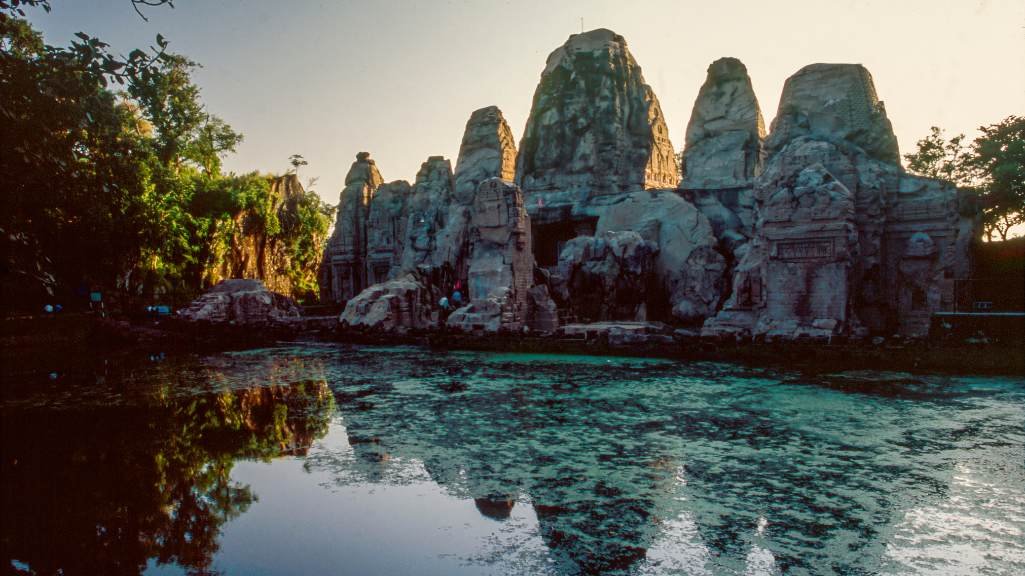Masroor Rock Cut Temple in Kangra, Himachal Pradesh: A Marvel of Ancient Architecture
Devin Barton
. 2 min read
The state of Himachal Pradesh in India is not only renowned for its picturesque landscapes but also boasts a rich cultural and historical heritage. One of the most fascinating architectural wonders nestled in the heart of Kangra district is the Masroor Rock Cut Temple. This masterpiece of ancient Indian architecture is a unique site that mesmerizes tourists and history enthusiasts alike. As visitors explore the temple's awe-inspiring beauty, they can now also engage in an cam chat with knowledgeable guides to delve deeper into the intriguing history and mythology surrounding this remarkable structure.

Masterpiece of Ancient Indian Architecture
History and Origin:
Believed to have been constructed during the 8th century, the Masroor Rock Cut Temple holds significant importance in Indian history. The temple complex is dedicated to Lord Shiva and is often compared to the world-famous Ellora Caves in Maharashtra due to its rock-cut architecture. Although the exact date of its creation remains a subject of debate among historians and archaeologists, it is commonly agreed that the temples were carved out of a single rock face by a group of skilled artisans over several years.
Architectural Brilliance:
The Masroor Rock Cut Temple complex consists of a cluster of 15 temples, meticulously chiseled out of the surrounding sandstone rock formation. The main temple, known as the Thakurdwara, is the largest and most elaborately designed structure among them. The temple is adorned with intricate carvings and sculptures that showcase a beautiful blend of Indo-Aryan and Dravidian architectural styles.
Each temple in the complex follows a similar architectural pattern, featuring a sanctum sanctorum, an assembly hall, and a mandapa or porch. The exteriors of the temples display ornate carvings depicting various Hindu deities, mythological scenes, and celestial beings. The craftsmanship is so precise that it is hard to believe that these impressive structures were hand-carved from solid rock.
Legends and Myths:
The origin of the Masroor Rock Cut Temple is shrouded in legends and myths. According to local folklore, the temple complex was built by the Pandavas during their exile, which lends an aura of mystique to the site. Another legend suggests that a local king, Raja Bhim Sen, dreamt of building a grand temple for Lord Shiva, and the gods themselves guided him to the rock-cut location.
Preservation Efforts:
Over the centuries, the Masroor Rock Cut Temple faced natural disasters, weathering, and human intervention, leading to some deterioration. However, in recent times, the Archaeological Survey of India (ASI) and the state government have taken significant steps to preserve and protect this precious heritage site. The temples have been declared a protected monument under the Ancient Monuments and Archaeological Sites and Remains Act, ensuring their conservation for future generations.
Visiting the Masroor Rock Cut Temple:
The Masroor Rock Cut Temple is easily accessible from Kangra town and other nearby cities. Visitors can experience the breathtaking beauty of the Kangra Valley while reaching the temple complex. The best time to visit is during the cooler months from October to March, avoiding the scorching summer temperatures.
As with any archaeological site, visitors are encouraged to respect the sanctity of the place and follow the rules set by the authorities to preserve the historical significance of the temple.
Conclusion
The Masroor Rock Cut Temple stands as a testament to the ingenuity and skill of ancient Indian artisans and architects. Its awe-inspiring rock-cut architecture, rich historical legacy, and serene surroundings make it a must-visit destination for travelers seeking a glimpse into India's remarkable past. Preserving and promoting this architectural gem is not only a responsibility of the authorities but also a privilege for all those who appreciate the beauty of our diverse and culturally-rich heritage.
More Stories from
Architecture Engineering: Shaping the Built Environment
Discover the core principles, educational requirements, and responsibilities of architecture engineers, as well as the trends shaping the future of the profession.
The Evolution of TikTok: Latest Trends and Influencing Factors for 2023
This article discusses the findings of a report on TikTok's three influencing factors.
The Enchanting Rhododendron: Himachal Pradesh's State Flower
Discover the captivating Rhododendron, the state flower of Himachal Pradesh, India. This vibrant evergreen shrub, native to the Himalayas, paints the landscape with breathtaking colors each spring.
Exploring the Uncharted: Speculative Insights into the World Beyond 2021
This article provides a brief overview of potential geopolitical shifts, technological advancements, environmental concerns, health challenges, economic developments.
Racial Justice and Inclusivity: Promoting Equality in Society
Explore the vital journey towards racial justice and inclusivity as we uncover the challenges faced by marginalized communities and the transformative power of inclusivity.











.png?width=40&aspect_ratio=1:1)

.png?width=40&aspect_ratio=1:1)